Back in the day.
There is no more need for folding cameras or for those with collapsible lenses. Modern iPhones give 99% of photographers more than they will ever need and we will see periscope zooms in small packages in a generation or two. Quality is unsurpassed for the designed display medium which is a laptop, and the technology superb.
But before the iPhone there were many attempts at crafting small bodies and these involved either retractable lenses or collapsible fronts, the latter approach generally requiring some form of light tight bellows. Here are some of the best examples of the genre.
The grandfather of collapsibles is the Leica, whose 50mm f/3.5 Elmar lens retracted into the already compact 35mm film body to craft a device which could (more or less) be slipped into a large suit pocket or into an overcoat. Leitz soldiered on with collapsible 50mm (and a 90mm f/4 Elmar) well into the M era (1954 on) and even the vaunted early 7-element Summicron came in a collapsible mount.
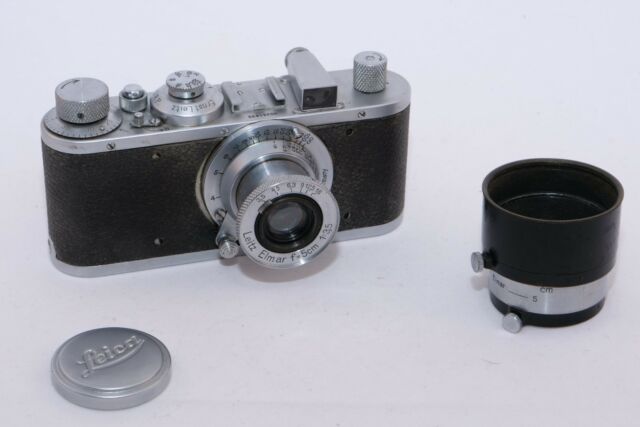
The Leica Standard of 1937
The hood made a nonsense of the concept and should be avoided. There was no interlock so if you forgot to extend the lens you would get a blurred blob in lieu of a picture. But the lens was decent (a 4 element Zeiss Tessar design ‘borrowed’ by Leitz), so long as you remembered to remove the lens cap.
A really clever variant, this one a folder, was the American Crown Graphic, much beloved of press men before smaller offerings came along. It took massive 4″ x 5″ negatives, was sharp as a tack and very light and compact given its capabilities, which included a tilting front and interchangeable lenses with rangefinder coupling. I found mine to be a delight to use.
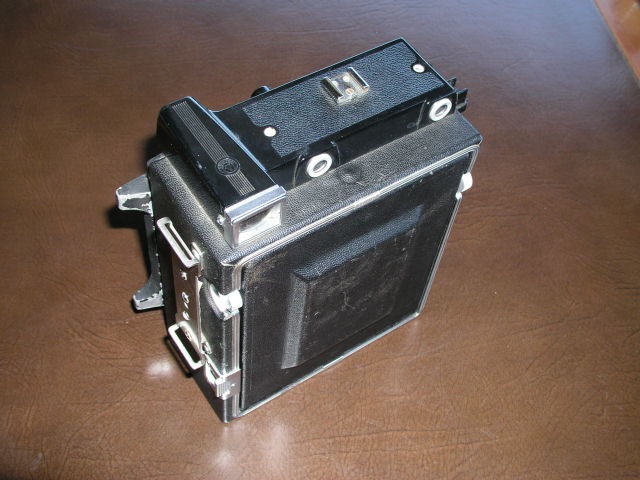
Crown Graphic, collapsed. 1947.
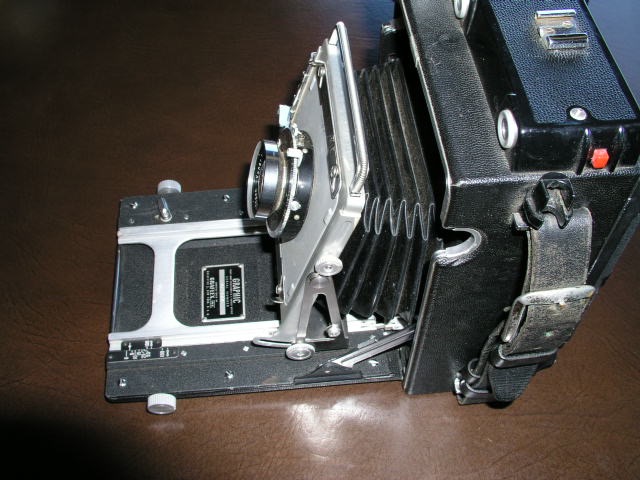
Crown Graphic, tilt front on extended baseboard.
Note the coupled rangefinder.
The Crown Graphic was arguably a variation on the earlier Zeiss Ikonta which took 120 (2 1/4″ square) film and commenced manufacture in 1929, going through many versions with post-war models offering an excellent 75 or 80mm f/3.5 Tessar in a Synchro Compur leaf shutter. The Tessar used here was ‘better’ than that found on 35mm cameras for the simple reason that you did not have to enlarge the image as much when making prints. Truly compact when collapsed given the large negative size, this was one of the best high quality/small size cameras of the era.
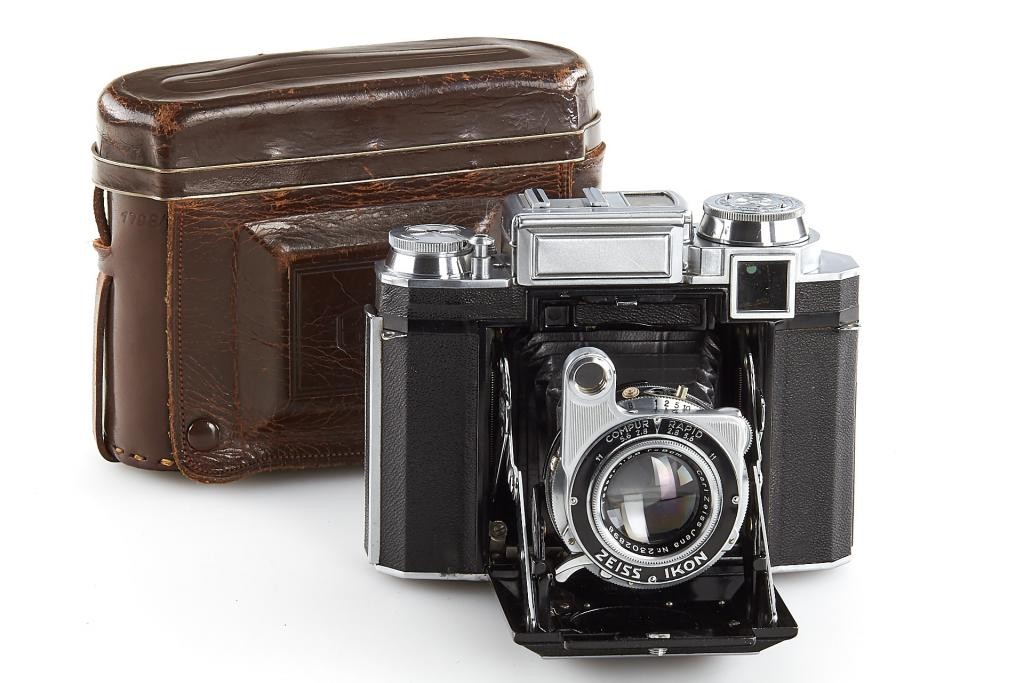
A late 1950s Super Ikonta 533/16. The auxiliary lens attached to the main taking lens is a rotating prism for
the coupled rangefinder. Checkout the small size of the carrying case which
accommodated the camera with the lens collapsed. Uncoupled selenium cell meter atop.
Kodak had an excellent, if complex, set of offerings in their Retina series, all made in Germany, and culminating with the Retina IIC (no meter) and IIIC (uncoupled selnium cell meter), The front element was detachable allowing 35mm and 80mm converter lenses to be attached. These were gargantuan and the quality only so-so, but the base offering of the Rodenstock Heliogon or Schneider Xenon 6-element f/2 50mm standard lenses was excellent. The camera’s Achilles Heel was a pot metal rack for the base-mounted film advance lever which would strip with use:
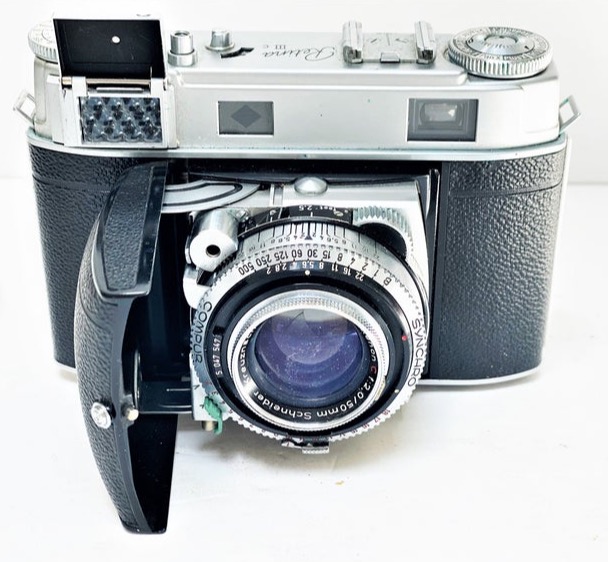
Retina IIIC. The finder on late models came with 35, 50 and 80mm frames.
The raised flap on the meter denoted low light use. 1960.
Rollei came along with a stroke of genius in 1963 with the Rollei 35, whose ads correctly boasted that the camera was not much larger than a 35mm film cassette. The collapsible lens – with an interlock no less – was the time honored Tessar and a couple CdS meter was included.
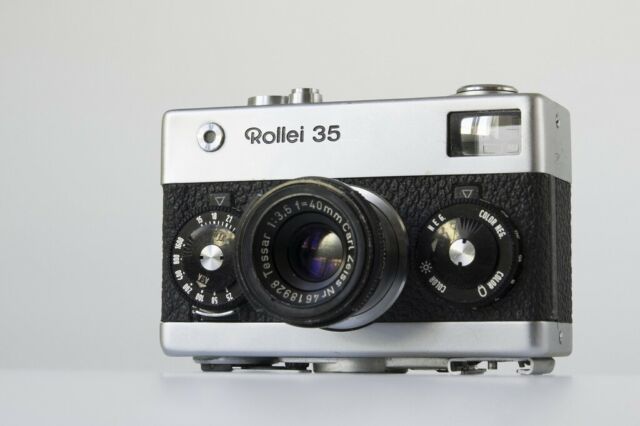
The Rollei 35. The 35S variant offered an f/2.8 optic.
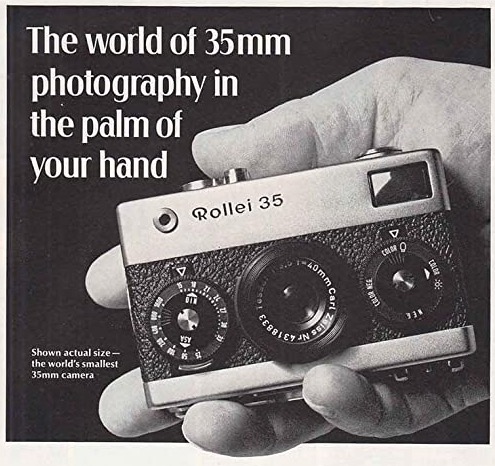
Period ad for the Rollei 35.
I travelled all over the world with mine and while focussing was by guess – there was no rangefinder – the results from the 40mm lens were excellent. Mine came in enameled black, making it pretty stealthy.
But the genius designers at Olympus were not to take this lying down and came up with something infinitely superior in their Olympus Stylus in 1991. It had autofocus for the 35mm f/2.8 lens, a length which was perfect for street snapping, and a flash was included. This was a clamshell design. Slide open the lens cover and the lens would extend. The camera was well made, housed in a tough resin shell, and I literally beat mine to death when it failed after many journeys and hundreds of rolls of film. Yes, the film rewound automatically at the end of the roll. One handed operation was a breeze and over 5 million were sold. I consider the Olympus Stylus the best collapsible camera made.
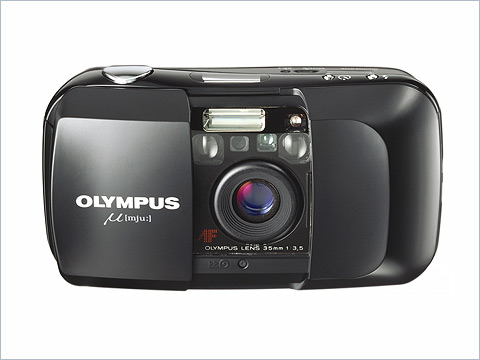
The f/3.5 lens became f/2.8 later.